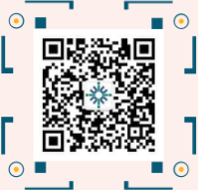[CCM Cultural Heritage and Tourism Course Specialized Study Tour] From a Basic Understanding of Intangible Cultural Heritage to its Creative Inheritance
On October 8, 2024, Ms. Wanqi WAN, the instructor of the CCM4053 Cultural Heritage and Tourism course, invited Mr. Weijie DENG, the Director of the Promotion and Publicity Committee of the Chinese Dragon and Lion Sports Association, the President of the Foshan Dragon and Lion Sports Association, and the representative inheritor of the national intangible cultural heritage (Guangdong Lion Dance) from Foshan, to present an engaging lecture on traditional intangible cultural heritage for the students.

Mr. Weijie DENG shares Lion Dance Culture with the students during class
In his lecture, Mr. Deng emphasized that Lion Dance transcends being a mere folk activity; it is a cultural heritage that encapsulates the Chinese spirit of self-reliance, perseverance, and unending vigor. It captures the enterprising character of the Lingnan people, their strive for excellence, and their fearlessness in the face of difficulties. Lion Dance is a ceremonial performance, a symphony of movements that goes beyond mere dancing. The entire performance is divided into sections of celebration, competition, socializing, exorcism, formation, and performance.
Lion Dance performances are diverse, encompassing complex movements on the ground or on poles, such as soaring, shifting, flashing, pouncing, spinning, and leaping. These movements depict the eight states of the lion, showcasing its power and vigor. Mr. Deng's lecture was a combination of explanation and demonstration, providing a vivid portrayal of the Lion Dance culture.

Combining action interpretation with content presentation
Mr. Deng’s lecture was insightful yet easily comprehensible, providing students with a comprehensive understanding of Lion Dance and fostering a passion for traditional culture and a sense of responsibility for its inheritance. As an important cultural symbol connecting China and the world, Lion Dance will undoubtedly continue to shine brightly in the new era.
To help students delve deeper into understanding an intangible cultural heritage and to instill the mission of innovative inheritance, Ms. Wan not only invited Mr. Deng to provide a detailed explanation of the Lion Dance culture but also led the students to the Intangible Cultural Heritage Dragon & Lion Exhibition Hall in Guantang Village for a hands-on investigation and cultural exchange. The goal was to stimulate rural tourism development through the inheritance of intangible cultural heritage. Ms. Yijun ZHUO, the president of the Zhuhai Dragon and Lion Dance Sports Association, introduced the students to the role of each lion head, the significance of the team flag, the efforts made by the Zhuhai Dragon and Lion Association in preserving the heritage, and the challenges they face. This provided the students with a close-up experience of the charm of Lion Dance and the responsibility of its preservation.

President Zhuo Yijun introduces and demonstrates to students


President Zhuo is promoting and inheriting the Lion Dance culture
To provide students with a more immersive understanding of the process of making a lion head, the association arranged a mini lion head DIY workshop. During the activity, students crafted their own "lion heads", fostering a personal connection with the Lion Dance culture and creating a unique Lion Dance memory.


Students are making their own lion heads

Group photo of teachers and students with President Zhuo
Following the Guantang field trip, Ms. Wan arranged for students to watch a Lion Dance performance by the UIC Lion Dance Team – Zhang Fei’s Drunkenness, and experience the basic movements of Lion Dance firsthand.

Lion Dance performance “Zhang Fei’s Drunkenness” is playing

Students experience Lion Dance in immersion mode

Students experience Lion Dance in immersion mode
From the popularization of intangible cultural heritage knowledge, to the visit to the Exhibition Hall, and finally hands-on experience, this series of comprehensive intangible cultural heritage learning activities provided students with a fresh understanding of Lion Dance. How can we better integrate such precious cultural heritage into the lives of young people? How can we make more people understand and love the Lion Dance culture, thereby ensuring better preservation of intangible cultural heritage? As this series of activities concluded, it left students with ample room for thought on how to assist the association in preserving and promoting traditional intangible cultural heritage. In our future studies and lives, we will certainly put what we have learned into practice, let the Lion Dance culture continue to shine in the new era, use intangible cultural heritage to bridge the past and future, and serve as a conduit for China to communicate with the world!

The Dragon & Lion Exhibition Hall of Zhuhai
Text: Chu LIU
Photos: Ms. KK WAN, Ms. Yao XIAO, Ms. Chu LIU
Editors: Ms. KK WAN, Ms. Yao XIAO
